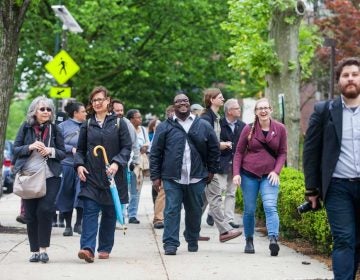From sacred to civic, new life for old Philly churches
Philadelphia has seen its share of old church buildings neglected and even torn down, but a new collaboration seeks to transform them into community assets.
Listen 5:59-

Wharton-Wesley United Methodist Church in Southwest Philadelphia has been selected as a prototype for Infill Philadelphia's Sacred Places/Civic Spaces design challenge. (Emma Lee/WHYY)
-
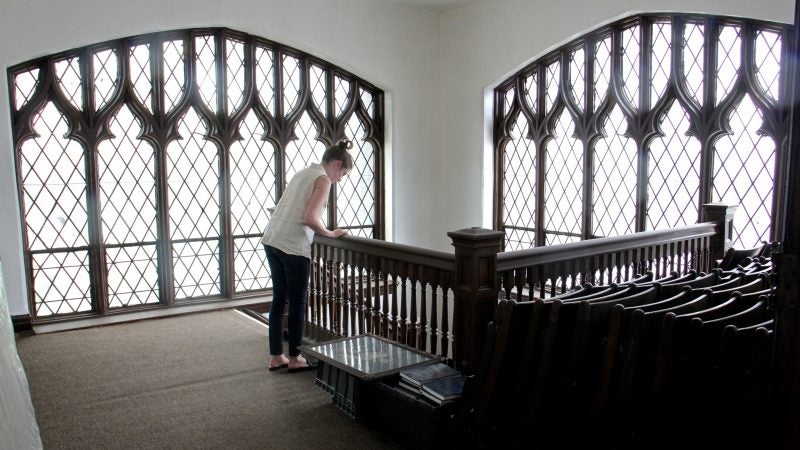
A stairwell is used for storage at Wharton-Wesley United Methodist Church. The congregation has dwindled from a high of 700 to about 150 members. (Emma Lee/WHYY)
-

The Rev. David Brown says he sees Infill Philadelphia providing an opportunity for the rebirth the church where he is an ordained deacon. (Emma Lee/WHYY)
-
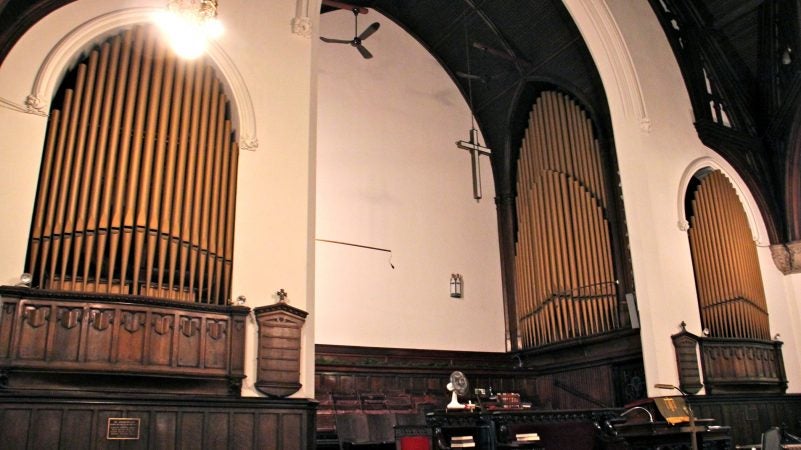
On special days, a pipe organ fills the sanctuary with music at Wharton-Wesley United Methodist Church, but for regular Sunday services, members meet in a smaller chapel which is more easily heated and cooled. (Emma Lee/WHYY)
-
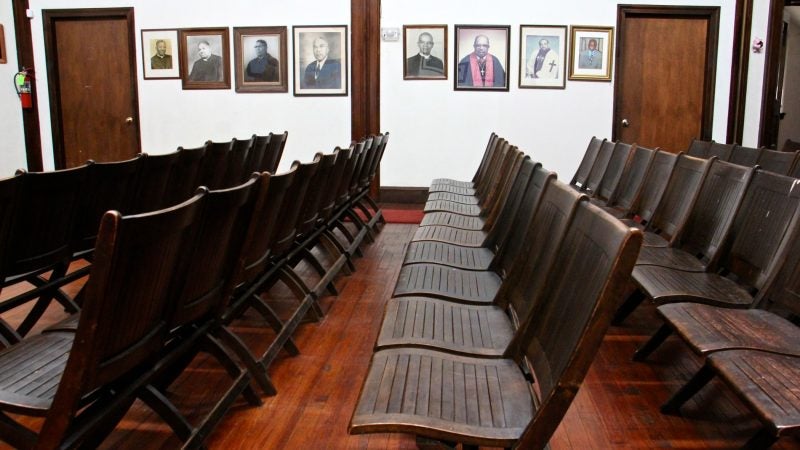
Former leaders of Wharton-Wesley United Methodist Church in Southwest Philadelphia line the walls of a small chapel shared with a Mennonite congregation. (Emma Lee/WHYY)
-
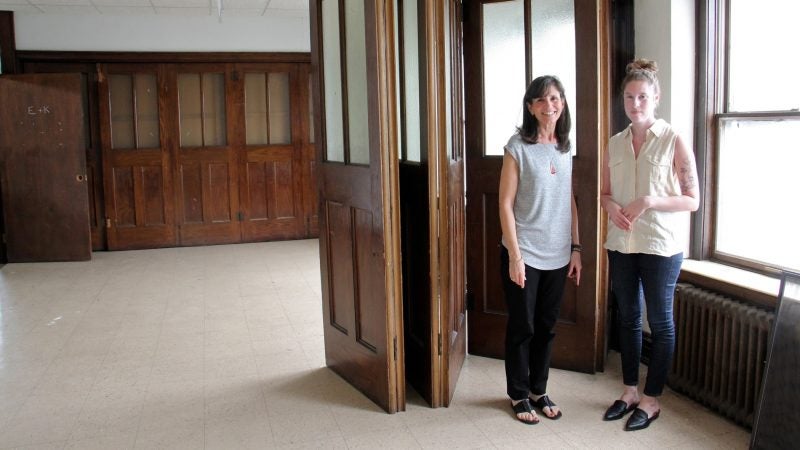
Heidi Segall Levy of Community Design Collaborative (left) and Rachel Hildebrandt of Partners for Sacred Places explore unused classroom space in Wharton-Wesley United Methodist Church. (Emma Lee/WHYY)
It’s an all-too-common story in the life cycle of an urban neighborhood. Churches built on a grand, 19th-century scale remain as permanent landmarks, even as the surrounding neighborhoods evolve and change. Old residents move out and are replaced by different communities, and congregations scatter to other locations. The smaller memberships are hard pressed to keep up with maintenance and utility bills, and developers often covet the land beneath these historic structures.
Philadelphia has seen its share of old church buildings neglected and even torn down, but a new collaboration seeks to transform them into community assets. “Infill Philadelphia: Sacred Places, Civic Spaces” is a joint project of the Community Design Collaborative and Partners for Sacred Places.
It pairs the congregation of a historic church with a design firm and a community organization, to repurpose the underutilized buildings in neighborhoods in need of civic gathering spaces. Three sites were recently announced: Zion Baptist Church in Nicetown in North Philadelphia; the Philadelphia Masjid in Mill Creek in West Philadelphia; and the Wharton-Wesley United Methodist Church in Cobbs Creek in Southwest Philadelphia.
These three were chosen to model different approaches to the challenge. “Wharton-Wesley is the most traditional, in terms of its physical characteristics, and how it’s situated in the community, surrounded by residential, as many churches traditionally were,” said Heidi Segall Levy, director of design services at the Community Design Collaborative. “And it was a congregation that was actively looking to create better relations with their community.”
“Our membership has dwindled, but we still have this huge space,” said the Rev. David Brown, ordained deacon of Wharton-Wesley. “We’ve been struggling to find ways to be a better resource for the community.”
He feels strongly that the project should be a partnership. “A lot of the ideas we have had in terms of our ministry have come from within our congregation. We think that having a more community engagement type of strategy will strengthen our current programs but also identify new ones we haven’t thought of.”
Rachel Hildebrandt, senior program manager at Partners for Sacred Places, says the Wharton-Wesley model could be applied to many other Philadelphia churches. “All historic religious buildings were surveyed, so from that — and also anecdotally — we know that the vast majority have underutilized space that can be repurposed or shared.”
For the first step in the process, the design firm Brawer & Hauptman, Architects has started assessing the conditions of Wharton-Wesley’s buildings. Over the summer, designers will meet with ACHIEVEability, the community organization partner, to hear the neighborhood’s needs. The design work will follow, to be revealed in December.
And then what?
“Because it’s going to be a community engagement process, we hope to decide together what’s the next step,” says Brown. “What do we want to be and what kind of money do we need to raise? Can we raise this barn together?”
Disclosure: The project is funded by the William Penn Foundation, which supports WHYY.
WHYY is your source for fact-based, in-depth journalism and information. As a nonprofit organization, we rely on financial support from readers like you. Please give today.




